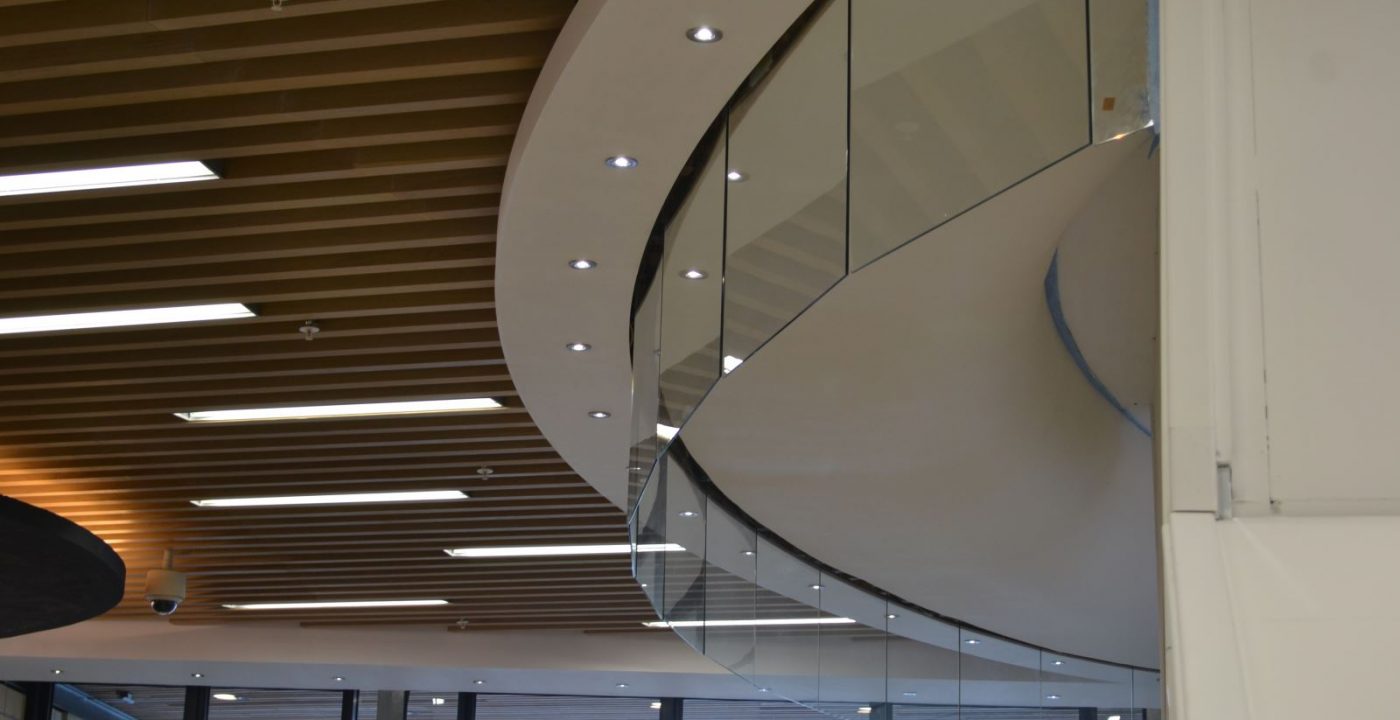Fire glass classifications and Smokeguard
Choosing fire safety glass begins by identifying the required classification for a particular application. From protection against flame and smoke only, through to flame, smoke and heat. In this article we explore the different types of fire protection available with fire safety glass, as well as the need for an effective smoke protection strategy, particularly within public spaces.

As discussed in Building Regulations 2010: Approved Document B (Fire Safety), one concept that underpins effective fire protection is compartmentation. This approach looks to contain fire in its area of origin for as long as possible. Under the principle, a building is split into different compartments, each designed to inhibit fire passing into the next. In doing this, the risk of a fire spreading within a building and becoming uncontrollable is reduced and more time is afforded for occupants to safely exit the building.
With cities becoming taller and more congested, high rise dwellings in particular are now more commonly designed with fire compartmentation in mind, to help to protect the building itself from fire damage, which extends to neighbouring structures. To successfully achieve fire compartmentation, creating barriers within buildings using fire-rated walls, doors, windows, corridors and partitions is important. What’s more, by incorporating fire safety glass, buildings can be made safe without compromising on aesthetic value.
Fire safety glass is manufactured in a number of different ways, depending on the required properties and performance level. According to BS EN 13501-2, there are three main classification levels: E (Integrity), EW (Integrity & Radiation) or EI (Integrity & Insulation). Installers should always consult Building Regulations prior to any on-site installation to determine the classification of fire safety glass that is required.
Integrity only
Integrity glass or ‘E’ Classification offers the base level of performance. When exposed to a fire, it has been designed and manufactured to perform by stopping flames and smoke penetrating through onto the unexposed side. It does not however prevent any transmission of heat in the event of a fire. ‘E’ glasses can be manufactured as wired glass, modified toughened or laminated.
Integrity & Radiation
Like integrity glass, EW classification maintains the same level of protection against smoke and flame but in addition, will also deliver a reduction in the amount of heat transmitted to the protected side. As the middle range glass, this is based on the radiated heat transfer being below 15 kW/m2 on the unexposed side for the duration of the fire. It is possible to have EW glasses manufactured in three different methods: coated modified toughened, laminated or gel-filled.
Integrity & Insulation
Finally, glass that is classified EI offers the highest level of protection. As well as providing a strong barrier against smoke, flame and hot gases, EI also delivers a significant reduction in the amount of heat transferred through the glass, keeping the average temperature of the unexposed side to below 140°C.
Reducing heat transmission can be just as important to restricting the spread of a fire within a building as the protection against flame and hot gases. For example, in certain settings and conditions, it may be possible for the level of heat transmitted to cause materials, such as papers or clothes, close to or touching the glass on the opposite side to ignite, should the incorrect fire safety glass classification be installed.
In addition, it’s not just fire and heat transmission that needs to be considered within a building’s strategy. Studies have shown that the number one cause of death related to fires is in fact smoke inhalation, with an estimated 80% of fire deaths being the result of smoke inhalation injuries, rather than burns. In public spaces such as shopping centres, museums and train stations, the daily footfall within these buildings can be intense. Members of the public may pass through quickly, or spend large periods of time circulating throughout the space; they may also be completely unfamiliar with both the building and its designated emergency exits.
Smoke control systems that effectively extracts smoke from a building in the event of a fire are therefore essential in ensuring the protection of people, property and assets and make access for firefighters as clear and safe as possible. Designed as a permanent fixture, discreet glass barriers, such as Pyroguard’s Smokeguard, can be hung vertically above ground, channelling fumes away and maintaining smoke-free escape conditions at low level. Unlike retractable smoke curtains, the installation of smoke barrier glass requires zero maintenance and has no maximum lifespan.
It is clear that in order to develop an effective and safe fire protection strategy, the level of fire, heat and smoke protection for a building will vary from application to application, project to project. We strongly recommend that you seek help from a fire safety glass manufacturer before you begin, as well as consulting with the relevant Building Regulations documentation.
For more information, please contact us.
Further reading
Technical fire glass specifications at your fingertips – the story of the development of Pyroguard’s TechLibrary
Read morePyroguard joins new umbrella brand Saverto: svt Group realigns international brand strategy
Read moreMeeting the EN Standards for fire safety with fire doors
Read moreReady to get started?
Contact us to for further advice or to discuss your next project.
